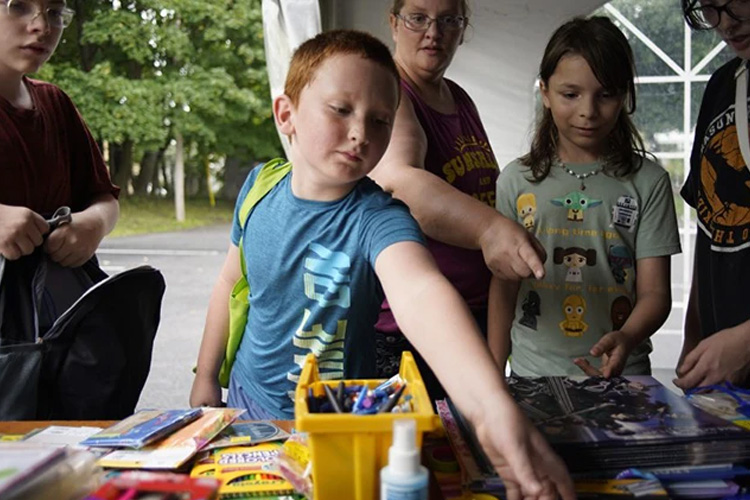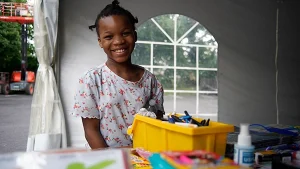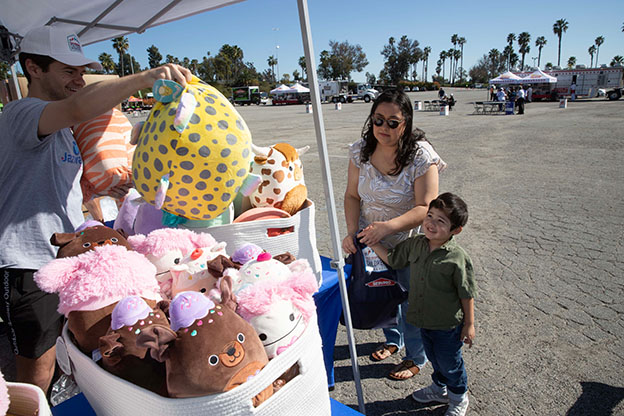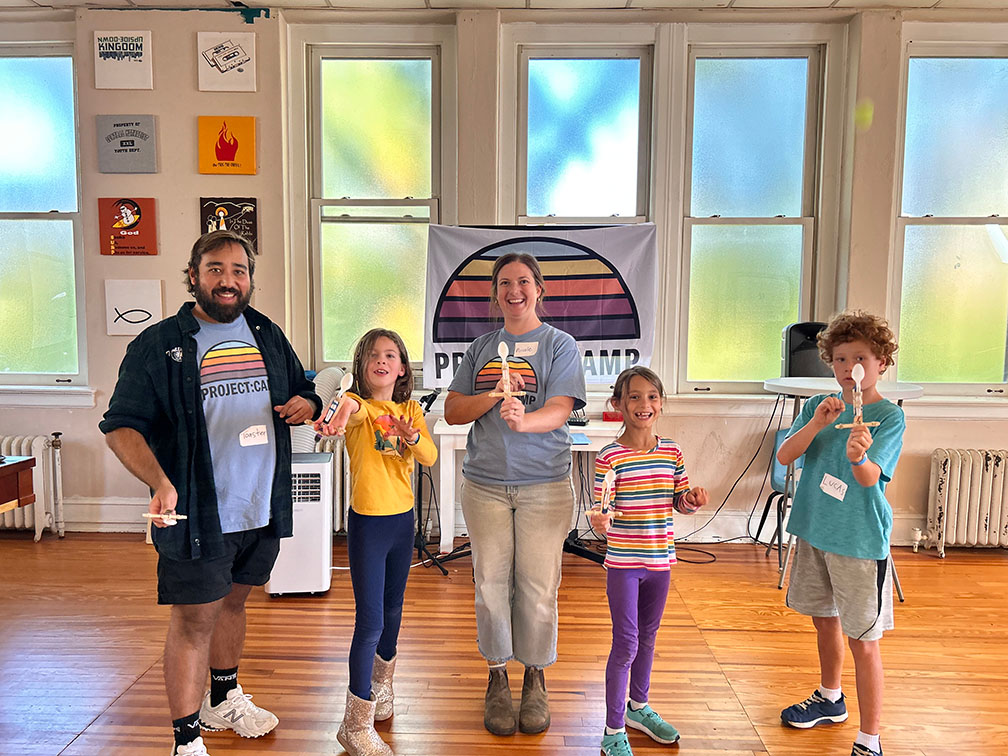“Education is the key that unlocks the golden door to freedom.” —George Washington Carver
With a mixture of excitement and impatience, thousands of families formed a line several blocks long in this lower-income neighborhood in Syracuse, New York, known as Southside.
They were all here for the 23rd annual back-to-school giveaway organized by the Mary Nelson Youth Center. This year, more than 7,000 people received donations of school supplies, clothing, food, and Amazon mystery boxes (which were obtained through Good360). At least 6,000 backpacks were handed out to school-age children.
“We’re giving them clothing, we’re giving them food, we’re giving them everything… My community has come together for one purpose—our children,” said Mary Nelson, the community activist responsible for growing a humble neighborhood barbecue into this massive annual block party. She started the donation event after her 23-year-old nephew died from gun violence.
In this upstate New York community, you can clearly see how poverty, crime, lack of economic opportunity, and educational disparities all intersect. Syracuse has the highest rate of childhood poverty of any urban city in the state. For many of the families waiting in line here, a donation of school supplies can make a world of difference.
“Every school year, it’s always so expensive to get supplies for the kids,” said Vincent Twiss, a Syracuse resident who came to the donation event with his wife and their two children. “It’s especially tight this year. We were shopping for backpacks and found that they cost like $30. We couldn’t afford that, so getting them here for free is amazing.”
How income inequalities affect access to education
Education enables people to unlock their full potential, paving the way for economic growth and opportunity. However, long-standing disparities persist across socioeconomic and geographic lines, perpetuating a cycle of inequality that is difficult to break.
Nearly one-fifth of students nationwide either live in poverty, attend a high-poverty school, or both. These children may lack:
- Basic school supplies, including backpacks, calculators, pens, markers and notebooks
- Adequate clothing to wear, especially in the wintertime, to keep them healthy and focused on learning
- The attention and guidance of parents or caretakers because they’re too busy working multiple jobs or otherwise trying to make ends meet
- Access to high-speed Internet or home computers, which are often necessary to do research for homework assignments
- Materials such as arts-and-craft supplies that are needed to successfully complete school projects
Because public schools in the U.S. are largely funded by property taxes, there is a wide disparity between wealthy and low-income areas. Schools in poorer districts may lack critically needed resources—everything from books and computers, to adequately trained teachers and up-to-date technology.
Teachers very often will try to address these shortfalls out of their own pocket. According to the National Center for Education Statistics, 93% of public school teachers spend their own money on school supplies without reimbursement. On average, teachers spend $500 on items for their classrooms.
All of these disparities lead to serious achievement gaps. For example, lower socioeconomic status (SES) students enter high school with average literacy skills that are five years behind their high SES counterparts. Compared to students from higher-income families, low SES students are behind in reading and math proficiency by at least 20%.
These academic gaps have been correlated with increased dropout rates, lower likelihood of entering and graduating from college, and a higher likelihood of incarceration.
Beyond the classroom, financial constraints also limit participation in extracurricular activities. Whether sports, arts, or academic clubs, these activities are integral to personal development. They foster teamwork, leadership, and problem-solving skills, all of which are crucial in shaping well-rounded individuals.
Unfortunately, many students miss out on these opportunities due to the high costs associated with uniforms, travel, and equipment. The long-term impact of this deprivation can be severe, as students without these experiences may find themselves less prepared for future challenges, both academically and personally.
Good360’s role in empowering communities
Working alongside corporate donors and nonprofit organizations, Good360 can help bridge these gaps, ensuring that students have the tools they need to thrive.
Good360 is committed to addressing educational inequality by ensuring that every student, regardless of their socioeconomic background, has access to the resources they need to succeed. Good360’s mission is simple: to close the “need gap”—the divide between what is available and what students require to thrive. Through our partnerships, Good360 can help provide students with essential educational tools, ranging from school supplies to technological resources.
Good360’s approach is rooted in collaboration and sustainability. By working closely with corporate partners, Good360 helps ensure that excess goods are repurposed and redirected to communities in need. This not only reduces waste but also ensures that students have the supplies necessary for academic success.
Key metrics and initiatives
Good360’s impact in the education sector is both measurable and meaningful. In 2023 alone, the organization distributed more than $3 billion in donated goods, impacting over 26 million lives. Much of this support went directly to educational initiatives, where essential school supplies were provided to underserved students across the country. These efforts are amplified by the organization’s commitment to sustainability—diverting more than 156 million pounds of goods from landfills.
Besides Good360’s partnership with the Mary Nelson Youth Center, here are several other key initiatives our organization has fostered in recent years:
- Through our partnership with Toys for Tots, Good360 distributed 1.8 million toys in 2023, benefiting over 650,000 children. These toys were not just playthings; they represented hope and opportunity for children in underserved communities, many of whom rarely receive new items. Through Good360’s efforts, these children were given the tools and inspiration they need to excel, academically, physically and emotionally.
- Good360 partnered with Jeff’s Shoe Challenge, an annual event in Portland, Oregon, that provides 8,000+ students in underrepresented communities with backpacks, school supplies, new and gently used footwear, new socks, free haircuts and manicures. Often overlooked, shoes are a basic necessity that can impact a student’s ability to participate in school and extracurricular activities.
- Good360 and Save the Children have partnered since 2017 to deliver millions of essential products to children and families in rural America living in poverty. Thanks to our corporate donors, Good360 has provided everything from school supplies to toys and books. Additionally, Good360 is a sponsor of Save the Children’s 100 Days of Reading campaign, which supports kids in the U.S. with key resources to keep them learning.
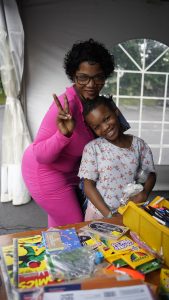
Vision for the future
Looking ahead, Good360’s vision is clear: to continue bridging educational inequalities and empowering future generations. By working hand-in-hand with corporate partners, nonprofits, and local communities, Good360 will continue to ensure that every student, regardless of background, has the tools they need to succeed. In doing so, the organization is not just supporting education but transforming lives—one student, one classroom, one community at a time.




